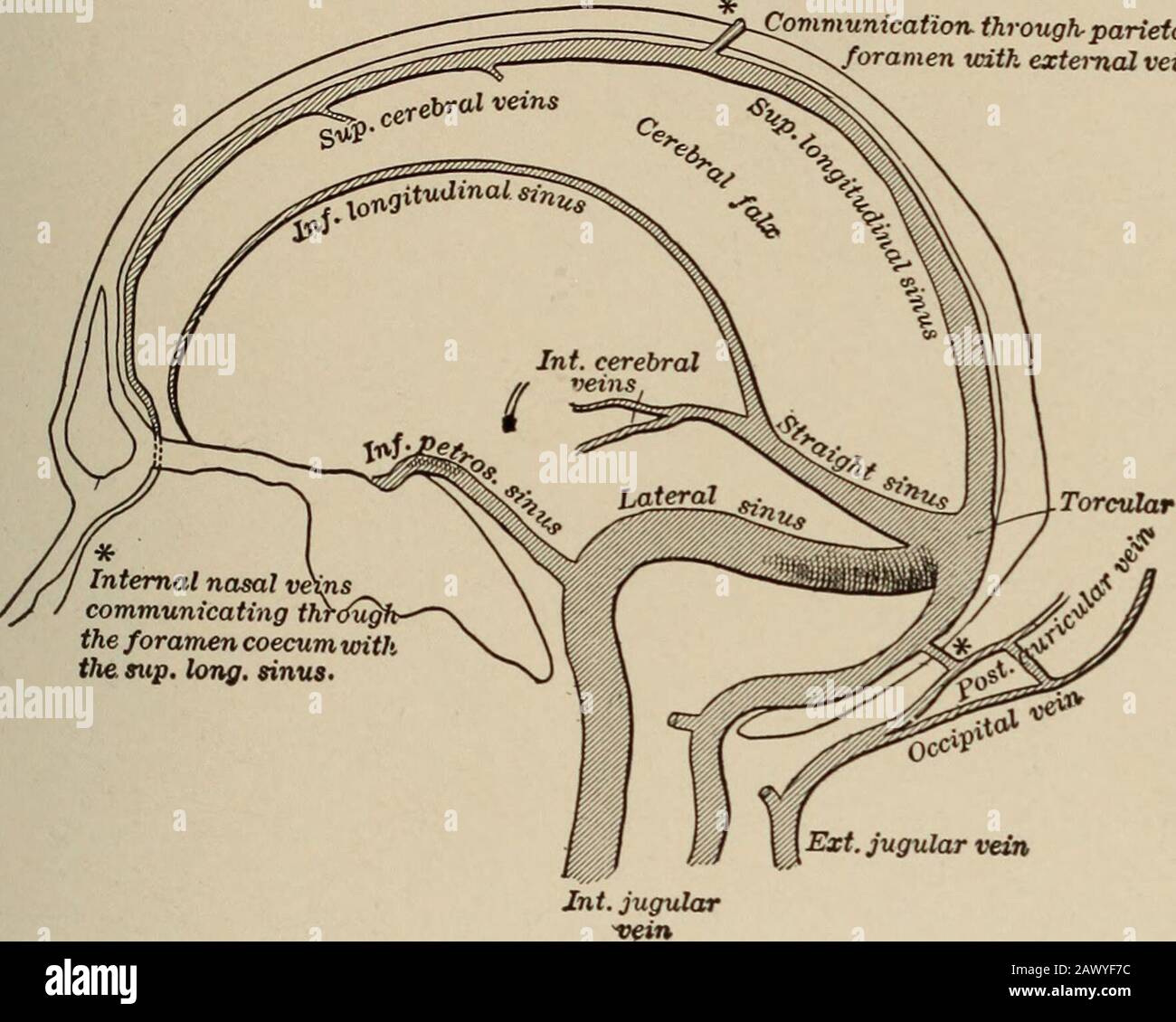Nervous and mental diseases . ity of recurrence.When the paralytic state is established, its management is the same asthat laid down in the previous chapter, and for the terminal monoplegiaor hemiplegia the indications are likewise identical. The treatment ofaphasias and the development of the opposite-sided speech-centers havebeen described in the chapter on Aphasia. DISEASES OF THE CEREBRAL VEINS AND SINUSES, 227 CHAPTER VIII.DISEASES OF THE CEREBRAL VEINS AND SINUSES. Anatomical Considerations.—The blood entering the cranium bythe internal carotids and vertebrals after irrigating the enceph

Image details
Contributor:
The Reading Room / Alamy Stock PhotoImage ID:
2AWYF7CFile size:
7.1 MB (278.7 KB Compressed download)Releases:
Model - no | Property - noDo I need a release?Dimensions:
1766 x 1414 px | 29.9 x 23.9 cm | 11.8 x 9.4 inches | 150dpiMore information:
This image is a public domain image, which means either that copyright has expired in the image or the copyright holder has waived their copyright. Alamy charges you a fee for access to the high resolution copy of the image.
This image could have imperfections as it’s either historical or reportage.
Nervous and mental diseases . ity of recurrence.When the paralytic state is established, its management is the same asthat laid down in the previous chapter, and for the terminal monoplegiaor hemiplegia the indications are likewise identical. The treatment ofaphasias and the development of the opposite-sided speech-centers havebeen described in the chapter on Aphasia. DISEASES OF THE CEREBRAL VEINS AND SINUSES, 227 CHAPTER VIII.DISEASES OF THE CEREBRAL VEINS AND SINUSES. Anatomical Considerations.—The blood entering the cranium bythe internal carotids and vertebrals after irrigating the encephalon makesits exit mainly by the internal jugular veins. The return circulationfrom the ventricular portion of the cerebrum and the callosal portionof the hemispheres is by the Gallenic veins and inferior longitudinalsinus, all of which empty into the straight sinus. From the convexitythe pial veins run upward and open into the superior longitudinal sinus Conimunication through-parietal foramen with external veins of skull.. jugular vein Fig. 88.—Diagram showing the communications existing between the superior longitudinal andlateral sinuses and the external veins, indicated in the figure by * (Leube). in a forward direction against the slow blood-current of this duralchannel. Here the circulatory conditions are rendered still moreunfavorable by hydrostatic pressure, by the presence of trabecular in thesinuses which impede the flow of blood, and by venous retardationduring inspiration. The cerebellar veins empty mainly into the lateralsinuses. Into the dural sinuses also empty many veins from the faceand scalp. The facial vein communicates with the cavernous sinusthrough the ophthalmic vein. The veins of the nasal vault open intothe anterior extremity of the superior longitudinal sinus. Numerousveins of the scalp along the median line have a similar outlet. Veinsfrom the mastoid process and its cutaneous surface enter the lateral and 228 DISEASES OF THE BRAIN PROPER. petros